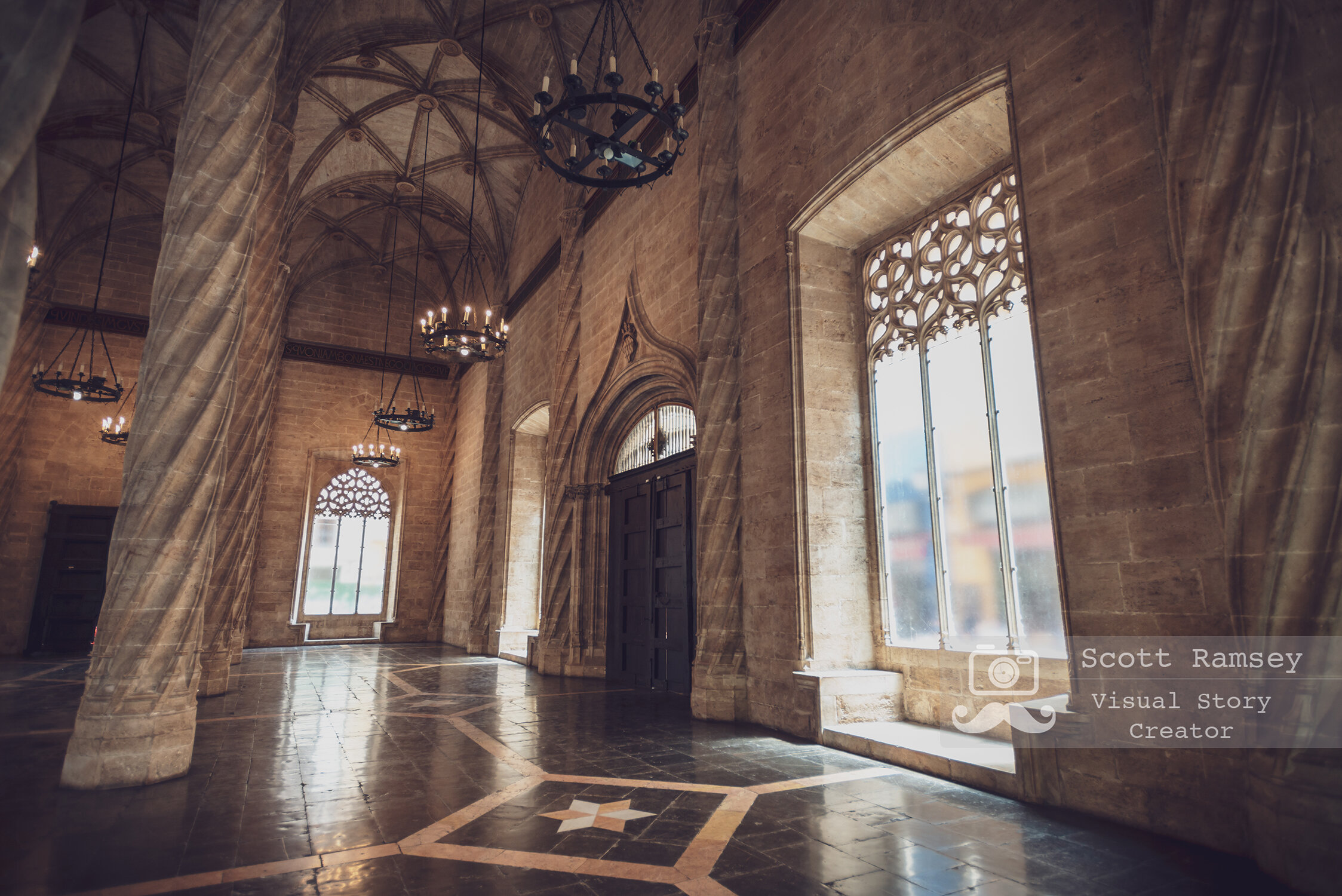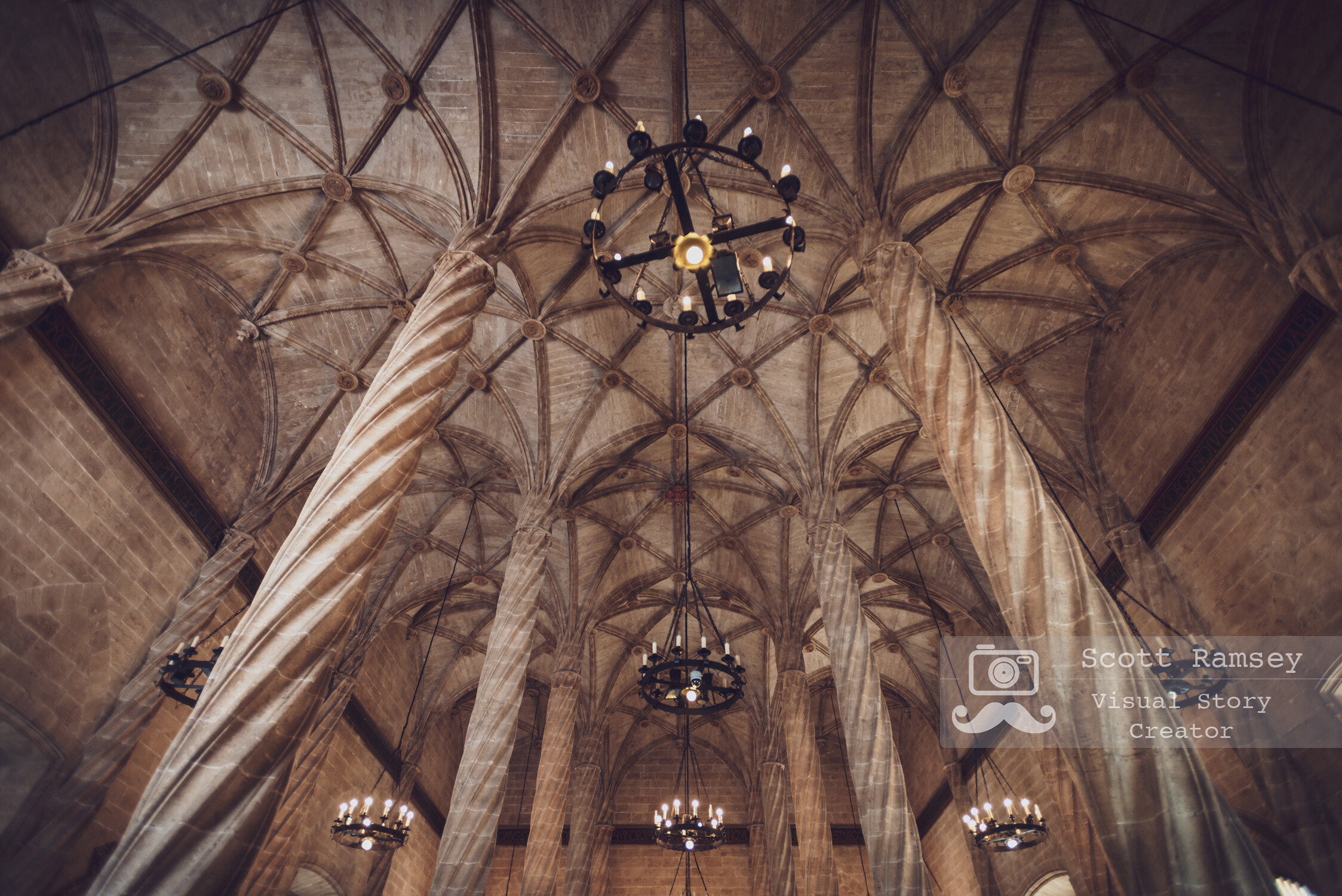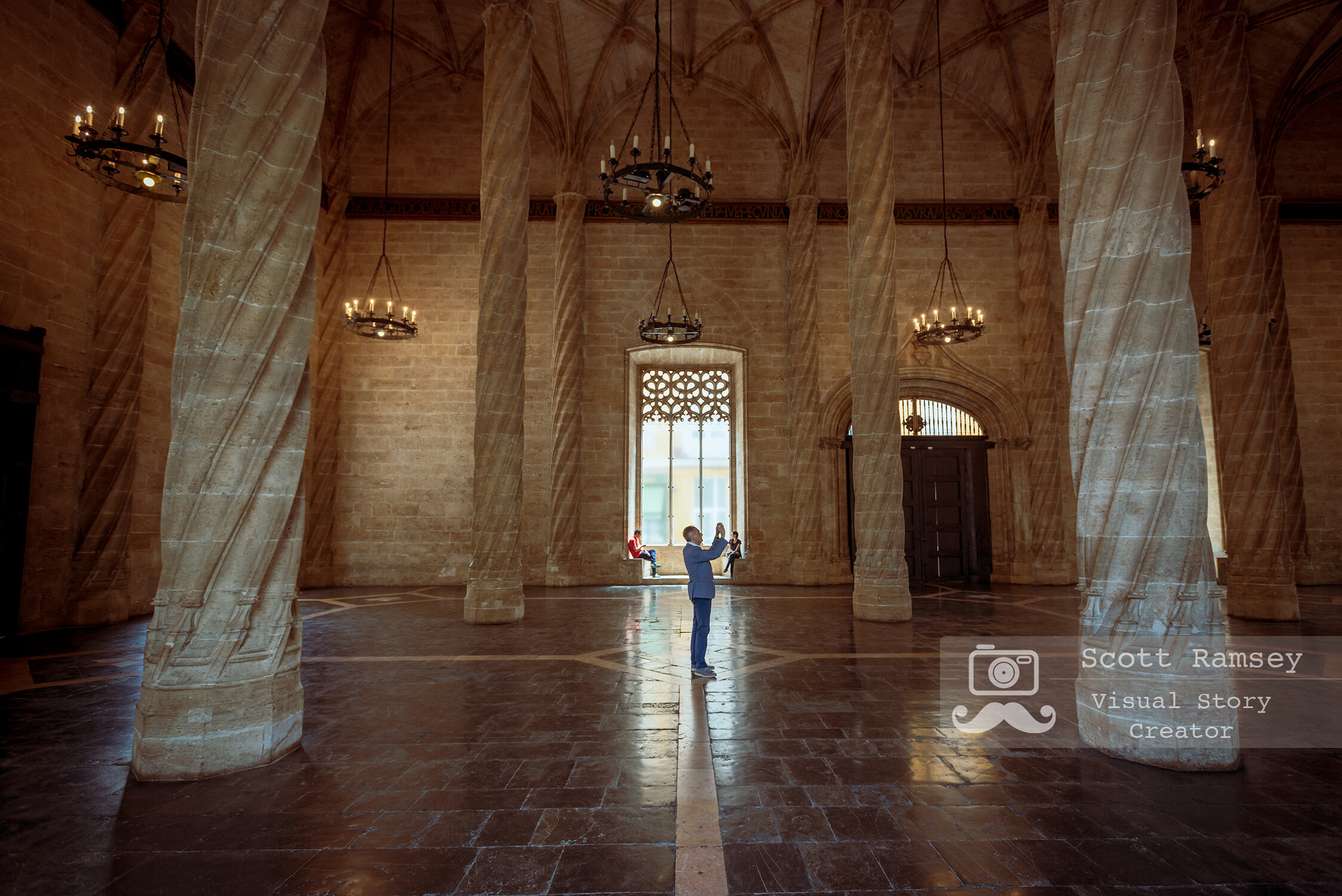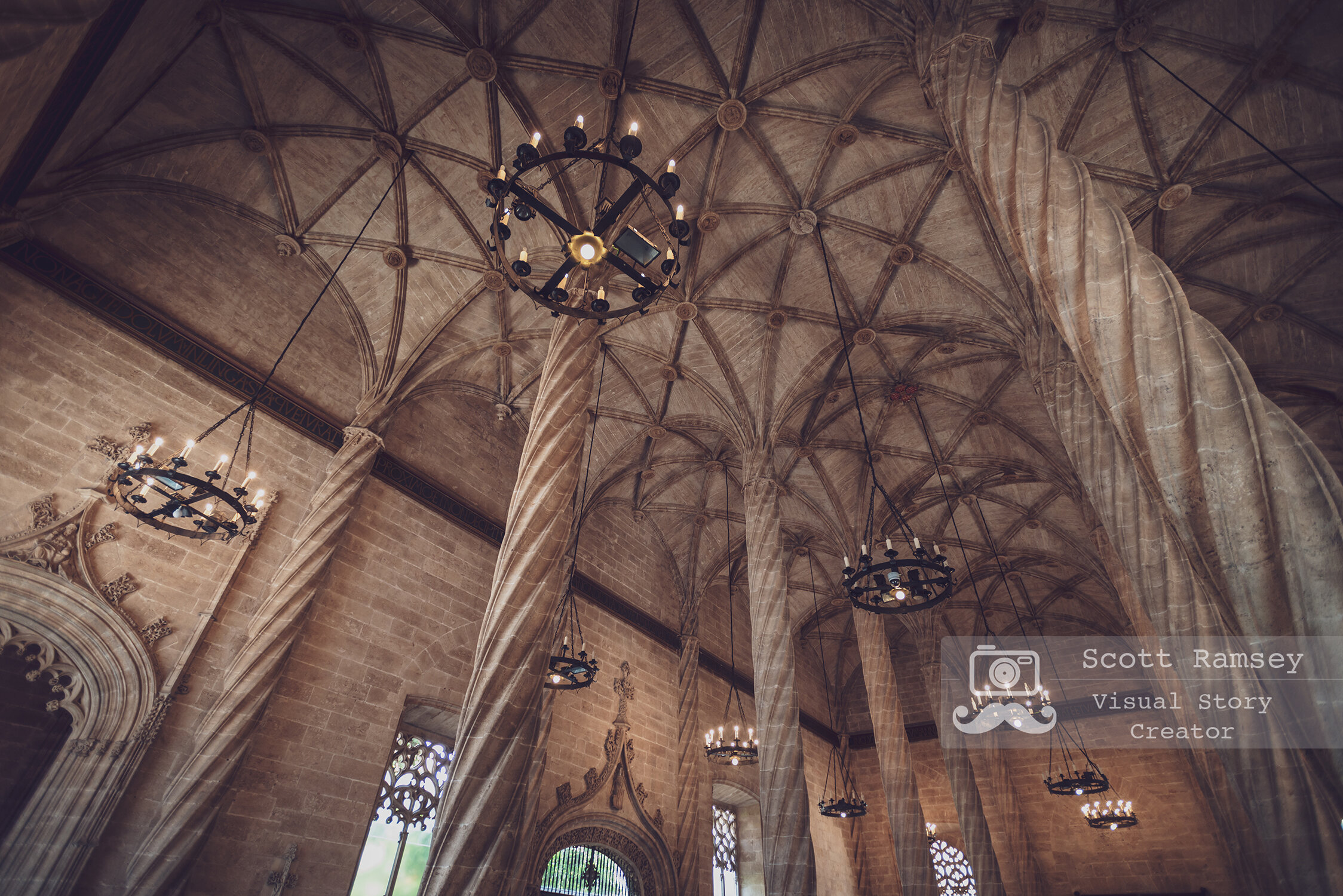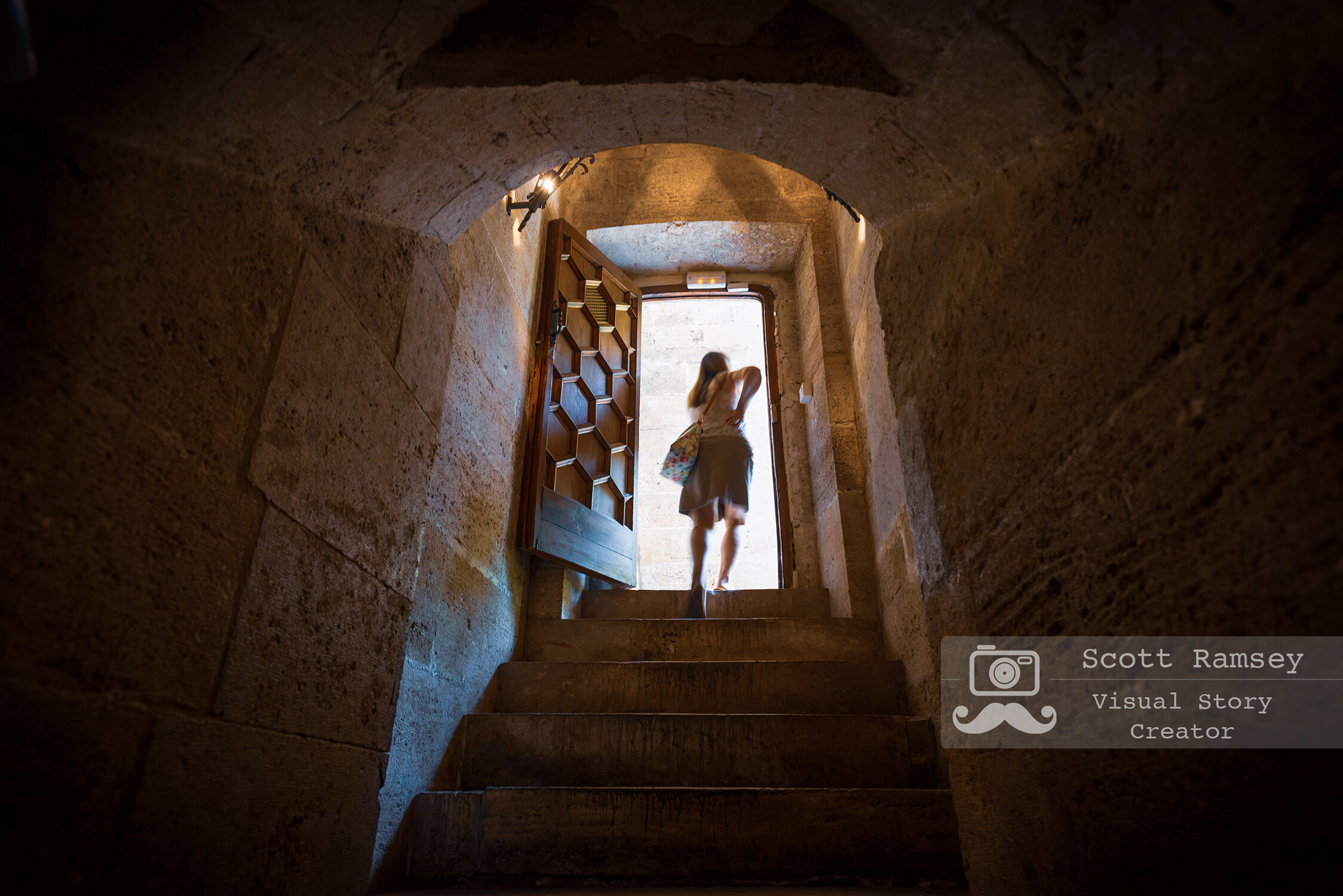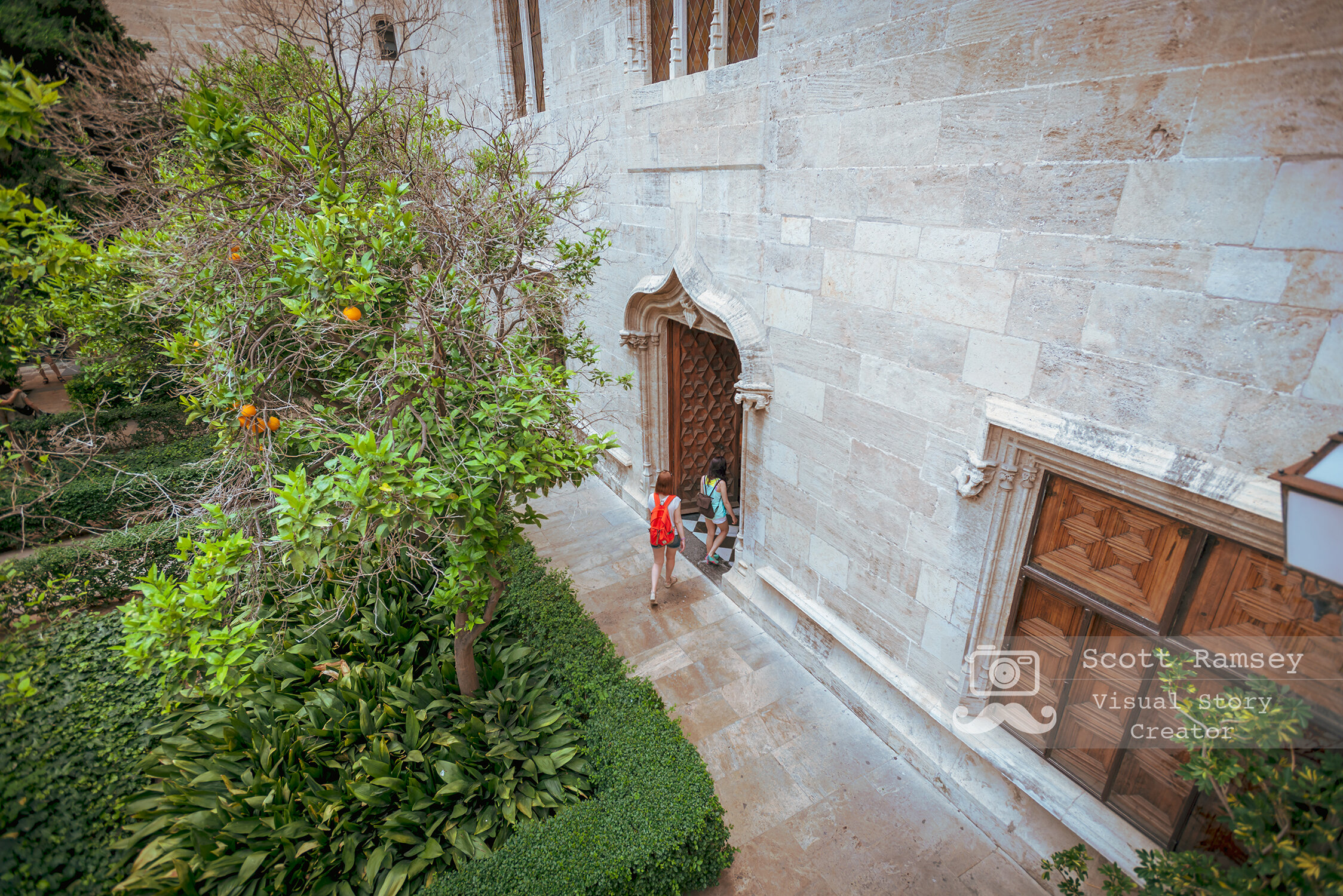How To Take Low Light Interior Photographs Without A Tripod | Travels With My Camera EP.3 Part 2
Taking photographs in low light without a steady tripod to hand can be a real problem. This can especially be true when you're travelling, as often carrying a tripod all day isn't an option; after all, you're already weighed down with all those cameras, lenses and emergency snacks!
In this blog post, I'll share a low light photography tip that I've been using for years, and that might make all the difference on your next photo adventure.
Don't fancy reading this? I also explain the photography technique in the video below.
On a recent trip to, Spain, I used a photography technique that allowed me to capture not only some beautiful interior photographs of Valencia's Silk Market but also helped me avoid backache for the rest of the trip.
Valencia's Silk Market is a UNESCO world heritage site in the heart of the city of Valencia in Spain. It's one of the top tourist attractions in the city, and I can't recommend it enough. It's a magnificent building, and a definite must-see if you love taking travel photographs. I was visiting the city while filming the 3rd episode of my YouTube travel photography series, Travels With My Camera. You can watch the full episode here.
After photographing Valencia's Bullring, I headed back into Valencia's narrow streets and made my way to the Silk Market. I had read that UNESCO had declared it part of humanity's heritage and that it was a masterpiece in civil Gothic architecture. It sounded like too good a photo opportunity to miss.
Valencia Silk Market
Valencia Silk Market - Large ornate columns in the Contract Hall. Photo © Scott Ramsey
The Silk Market or Silk Exchange was built in the 15th Century during Valencia's golden age. We've all heard of the Silk Road, and Valencia found it's self in the perfect location to distribute silk from China to the rest of the continent. It was designed as a shrine to commerce, and its every feature is considered symbolic. For example, it has been seen as an image of paradise, with the columns as trees and the vaulted ceiling as the roof of heaven.
It was quiet on the day I visited, and if my memory serves me correctly, it was free to enter on Sundays, although please check before you go. After entering the building, I was directed into its central courtyard, The Courtyard of the Orange Trees. It's a beautiful spot, and I highly recommend sitting for a time and enjoying the calmness. You'll soon forget the hustle and bustle of the narrow streets just the other side of the walls. With my batteries recharged and calmness returned I made my way into the impressive Contract Hall, one of the buildings most important rooms. It was in this hall commercial deals were struck, and it's breathtaking — a photographers dream.
Large swirling stone pillars are dotted around the hall, so perfectly carved that they look like ropes or silk suspended from the ceiling.
I loved photographing this room; however, it did have its challenges. The light was pretty bad, and when I'm exploring a city on foot, I don't usually carry a tripod. They are often far too bulky, and these days many of the tourist attractions and museums won't allow them to be taken in. So instead I relied on a low light photography technique I've used many times before, and one which I think you'll find very useful.
Conclusion -
How Do You Take Low Light Interior Photographs Without A Tripod?
So like me, you're travelling light and decided to carry just one camera and a couple of lenses as you spend the day exploring a new city. A good decision, as you're free to roam and won't need a session with the chiropractor when you get back to the hotel. But hang on, you've just walked into a beautiful old (but dark) historic building, and you've got to take a photo! But hang on you've not got your tripod!
Firstly don't, unless you're taking a selfie or a snap of your family, turn on the flash. We've all seen those people stood way off in the distance taking pictures with their camera or smartphones built-in flash flashing away! The likely hood that a tiny flash is going to light up a massive hall is well hopefull, to say the least. Instead, steady your arms (which in return steadies your camera) on a ledge or shelf, you can even lean firmly up against a column or wall (see warning below). Alternatively, try resting the camera on the floor.
Warning - Photography is not always allowed and that touching or leaning your camera on a historic building, wall, chair, or any other important historical artefact can cause damage! If in doubt, don't do it or ask first. After all, the last thing we want to do is damage anything! You have been warned, and I'm really not suggesting you lean up against an ancient artefact just to take a picture. Common sense is needed!
So with that warning out of the way back to the photography technique.
You see, the idea is to hold the camera and keep it as steady as possible. I know it sounds obvious, but trust me. I've seen so many people holding their cameras out at arm's length when trying to take a low light photograph; it's worth me mentioning. Then when you and your camera are nice and steady, slowly squeeze the shutter, remember you want as little movement of the camera as possible. You'll also probably need to bump up your ISO to aid you in creating your photographic masterpiece.
I used this very technique to take the interior photographs of the Silk Market below.
Sure it's not going to be as a good as using a nice sturdy tripod. But heck, who's wants to carry a tripod all day on the off chance you might need to use it for one photo, not me! Trust me after over 30's years of taking pictures professionally, looking after my back and shoulders is a number one priority. I often say you can spot a pro photographer a mile away because of the way they walk! Shoulder, back and knee problems are a common complaint. So beware, photographers - Carrying heavy camera bags and too much equipment really is not a good idea. Unless of course it's needed to get that awesome photo ;–)
I hope you find my low light photography tip useful. Do you have any tips to share, if so leave a comment below as I'd love to hear about them?
Till next time, keep those backs straight, knees bent and eyes sharp.
Scott






